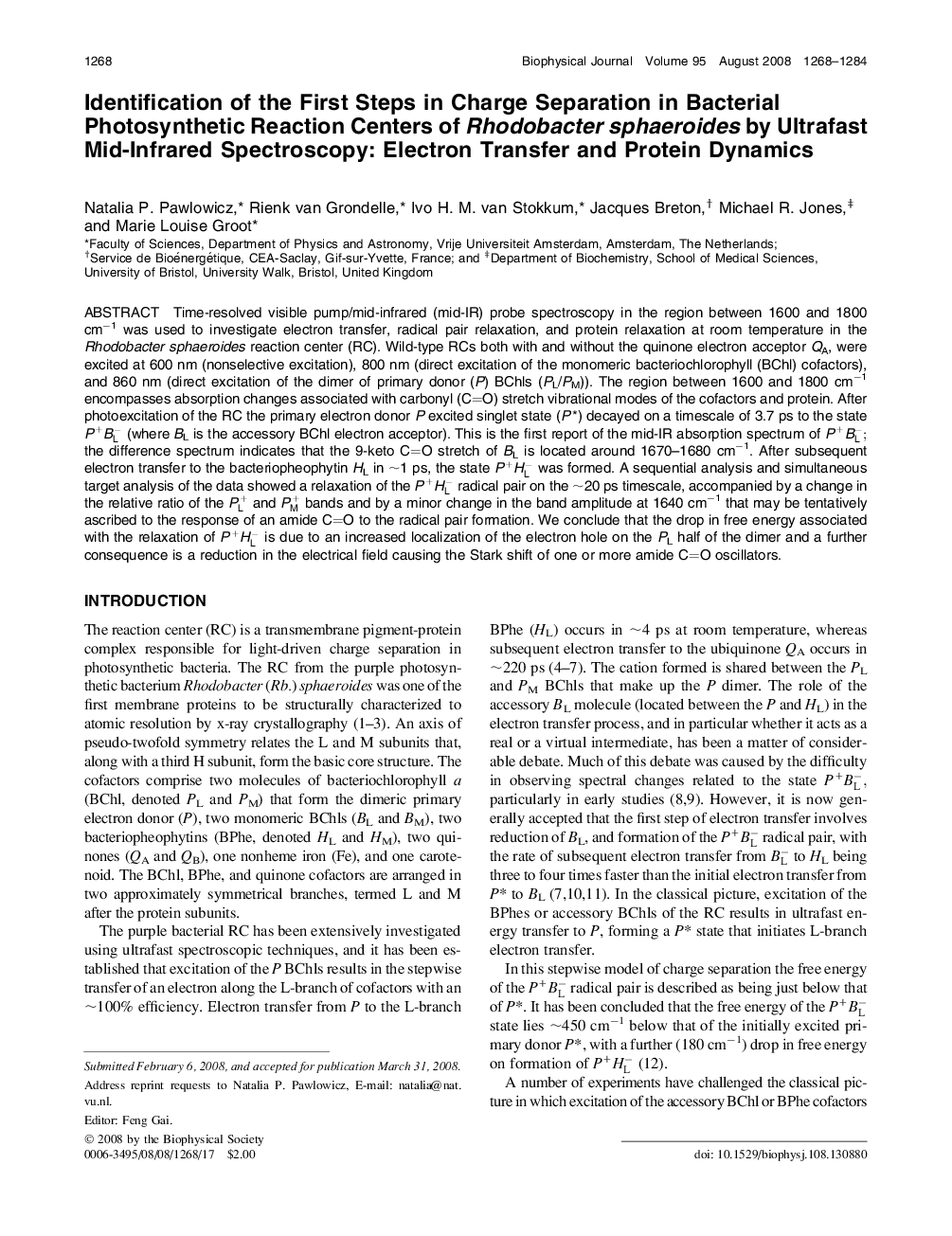| کد مقاله | کد نشریه | سال انتشار | مقاله انگلیسی | نسخه تمام متن |
|---|---|---|---|---|
| 1954907 | 1057806 | 2008 | 17 صفحه PDF | دانلود رایگان |

Time-resolved visible pump/mid-infrared (mid-IR) probe spectroscopy in the region between 1600 and 1800 cm−1 was used to investigate electron transfer, radical pair relaxation, and protein relaxation at room temperature in the Rhodobacter sphaeroides reaction center (RC). Wild-type RCs both with and without the quinone electron acceptor QA, were excited at 600 nm (nonselective excitation), 800 nm (direct excitation of the monomeric bacteriochlorophyll (BChl) cofactors), and 860 nm (direct excitation of the dimer of primary donor (P) BChls (PL/PM)). The region between 1600 and 1800 cm−1 encompasses absorption changes associated with carbonyl (CO) stretch vibrational modes of the cofactors and protein. After photoexcitation of the RC the primary electron donor P excited singlet state (P*) decayed on a timescale of 3.7 ps to the state P+BL− (where BL is the accessory BChl electron acceptor). This is the first report of the mid-IR absorption spectrum of P+BL−; the difference spectrum indicates that the 9-keto CO stretch of BL is located around 1670–1680 cm−1. After subsequent electron transfer to the bacteriopheophytin HL in ∼1 ps, the state P+HL− was formed. A sequential analysis and simultaneous target analysis of the data showed a relaxation of the P+HL− radical pair on the ∼20 ps timescale, accompanied by a change in the relative ratio of the PL+ and PM+ bands and by a minor change in the band amplitude at 1640 cm−1 that may be tentatively ascribed to the response of an amide CO to the radical pair formation. We conclude that the drop in free energy associated with the relaxation of P+HL−, is due to an increased localization of the electron hole on the PL half of the dimer and a further consequence is a reduction in the electrical field causing the Stark shift of one or more amide CO oscillators.
Journal: - Volume 95, Issue 3, 1 August 2008, Pages 1268–1284